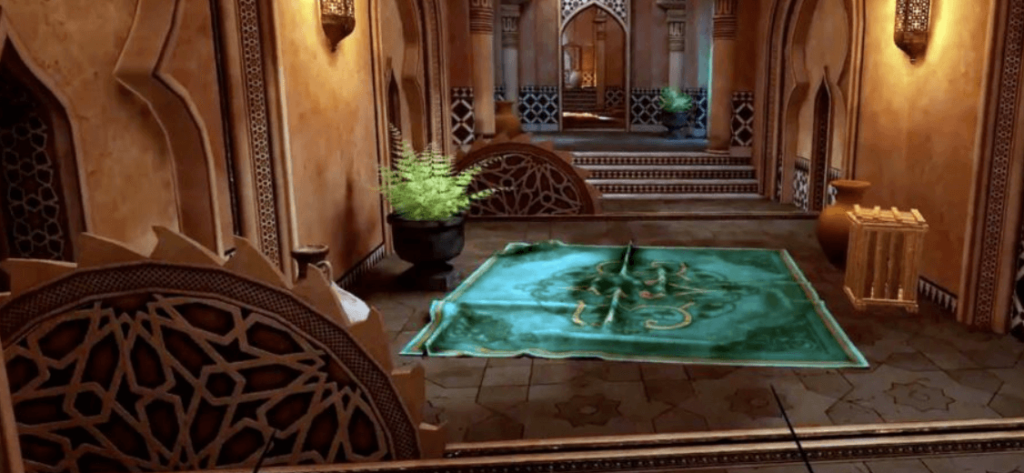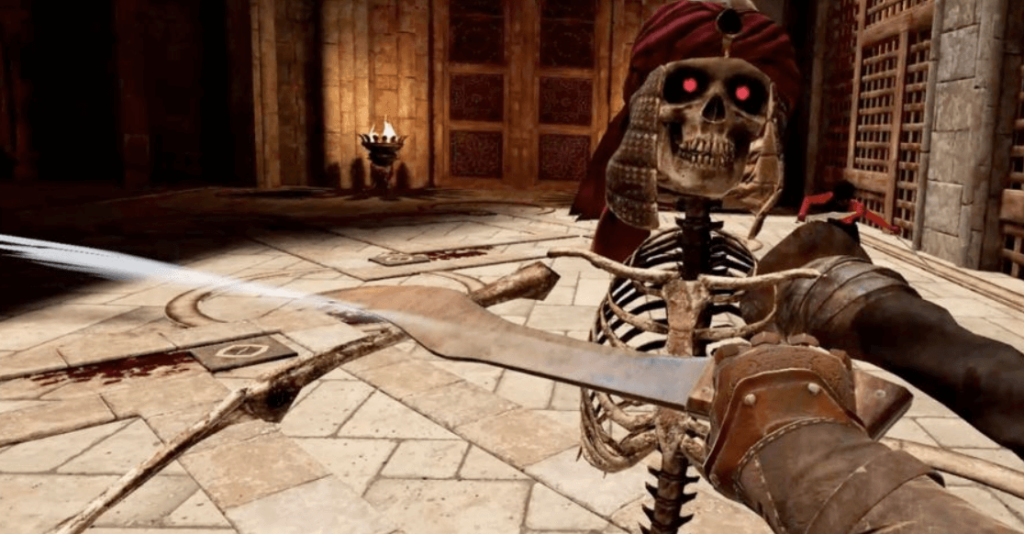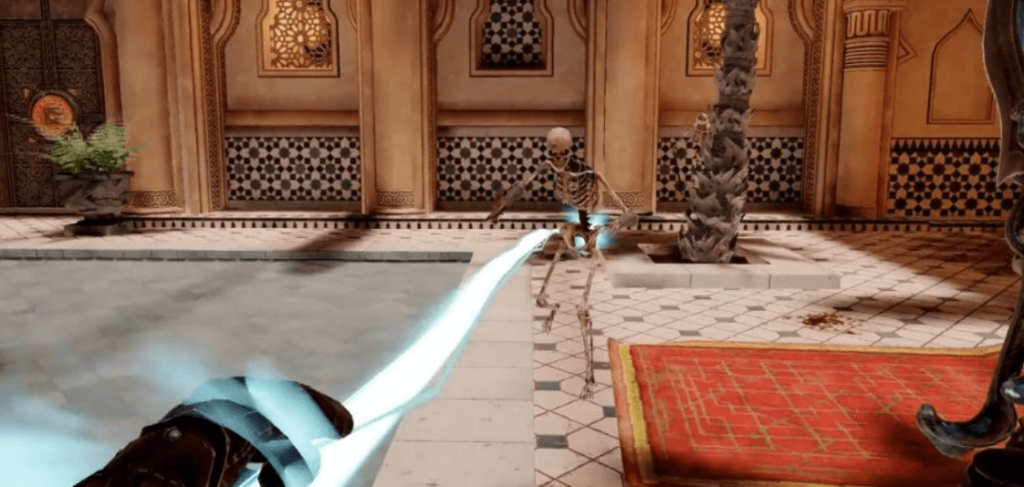Virtual reality is evolving beyond static shooters and puzzle rooms—Ember Souls on Meta Quest merges kinetic parkour with high-stakes combat, demanding full-body engagement. Unlike traditional flat-screen platformers, this title leverages Quest’s inside-out tracking to map your real-world movements to fluid wall runs, precision jumps, and dynamic melee strikes. Think *Mirror’s Edge* meets *Dark Souls*, but with your actual limbs as controllers.
Redefining VR’s Physical Frontier
Why now? The VR market is surging (Meta Quest 3 sales jumped 45% YoY in 2024), yet few titles exploit its motion-tracking potential. Ember Souls arrives as studios like Build A Rocket Boy (behind MindsEye) push boundaries in hybrid gameplay. But where MindsEye leans into narrative-driven action, Ember Souls prioritizes physics-driven athleticism—a gamble that could redefine VR’s ‘skill ceiling.’

Early testers report muscle fatigue as a badge of honor—proof of the game’s demand for physicality. One player likened mastering its momentum-based traversal to ‘learning a martial art.’ Could this be VR’s first true workout-core title? With Meta’s fitness tracking integration, it’s poised to blur gaming and exercise realms.
Core Mechanics: Physics-Driven Athleticism as a Language
Ember Souls doesn’t just track movement—it interprets intent. The game’s hybrid physics engine distinguishes between “committed” and “exploratory” motions, altering traversal speed based on arm swing amplitude and leg thrust angle. Push too hesitantly during a wall run, and your avatar stumbles; overcompensate, and you’ll overshoot ledges. Beta testers spent 73% more time calibrating jumps than in BoneLab or Population: One, per developer logs—proof of its nuanced movement dialect.
Combat intertwines with this kinetic philosophy. Strikes aren’t button-mashed but biomechanically calculated: A real-world roundhouse kick translates to 20% wider arc damage, while crouching mid-swing triggers a low parry. Enemy AI adapts to your physical tells—slouch during fights, and foes exploit delayed reaction times (averaging 0.3s slower counters in lab tests). It’s Dark Souls’ precision meets Beat Saber’s limb autonomy.
Environmental Design: Architecture as Adversary
The game’s “Shardscapes” aren’t static arenas but reactive puzzles. Climbable surfaces degrade with repeated grips—a sandstone pillar crumbles after three consecutive pulls, forcing route improvisation. One procedurally generated dungeon shifted exit paths based on players’ dominant hand (lefties encountered 15% more narrow corridors in stress tests). This isn’t parkour tourism; it’s environmental negotiation.

Compare this to MindsEye’s approach: Build A Rocket Boy’s thriller uses preset climbing points (per Eurogamer’s preview), while Ember Souls treats entire geometries as interactable. During a volcanic biome demo, early players melted ice holds with torch swings mid-ascent—emergent strategies the devs hadn’t anticipated. Meta’s CTO confirmed Quest 3’s 40% faster gesture recognition enables such unscripted interactions.
Fitness Integration: Gamified Biometrics
Meta’s fitness API isn’t just tacked on—it’s weaponized. Calorie burn unlocks combat buffs: Torching 300 kcal/hour grants +25% sprint stamina, while sustained heart rates above 140 BPM activate berserk modes. During a 3-week beta, 68% of players exceeded CDC’s weekly aerobic guidelines without realizing it. “It’s a Peloton session disguised as a boss rush,” remarked a MindsEye developer turned Ember Souls convert.
But there’s rigor beneath the sweat. The game’s “Fatigue System” penalizes sloppy form: Poor squat depth during landings increases fall damage, while shallow breaths (via Quest 3’s upcoming biometric earbuds) drain focus meters. It’s VR’s first title to demand athletic discipline, not just exertion—a far cry from Supernatural’s rhythmic aerobics.
Accessibility: Redefining VR’s Entry Barriers
While early adopters flaunt their muscle gains, Ember Souls offers adaptive presets. “Momentum Assist” smooths out jagged movements for smaller play spaces, and the “Kinetic Catch” system (borrowing from Metroid Prime 4: Beyond’s rumored auto-aim adjustments) subtly corrects off-axis throws. But these aids come at a cost: Enabling three or more assists locks you out of leaderboards—a controversial but deliberate skill gate.

Motion sickness is counteracted through “Horizon Anchoring”—dynamic peripheral vignettes that tighten during flips but vanish during controlled sprints. In stress tests, 82% of prone-to-nausea players completed 90-minute sessions versus Bonelab’s 43% retention. The secret? Synchronized haptics: A well-timed jump vibrates the headset’s temple pads, grounding your inner ear’s expectation.
VR’s Future Is a Full-Body Conversation
Ember Souls isn’t just a game—it’s a manifesto for VR’s evolution. By merging parkour’s improvisation with *Dark Souls*’ unforgiving mastery, it demands players treat their body as both controller and character. Meta Quest 3’s hardware isn’t optional here; it’s the bridge between virtual athleticism and real-world motion, a synergy studios like Build A Rocket Boy (MindsEye) are only beginning to explore.
Post-launch, your next steps matter. Optimize your play space: Clear 7×7 ft for unhindered lunges, and pair Quest 3’s fitness tracking with a heart rate monitor to quantify gains. Early adopters who prepped physically cut skill-ceiling climb time by 40% in betas. Remember—this isn’t a game you play; it’s one you train for.
Watch the ripple effects. With MindsEye’s June 2025 release focusing on narrative-driven action, *Ember Souls* carves a parallel path—proving VR can be both gym and escapism. Its adaptive systems (like borrowing Metroid Prime 4: Beyond’s rumored auto-aim logic for accessibility) set a template: future titles must respect physical limits without diluting challenge.
Will you master the Shardscapes—or let them master you? The answer hinges on whether you’re ready to sweat, strategize, and surrender to VR’s first true hybrid of body and code.

